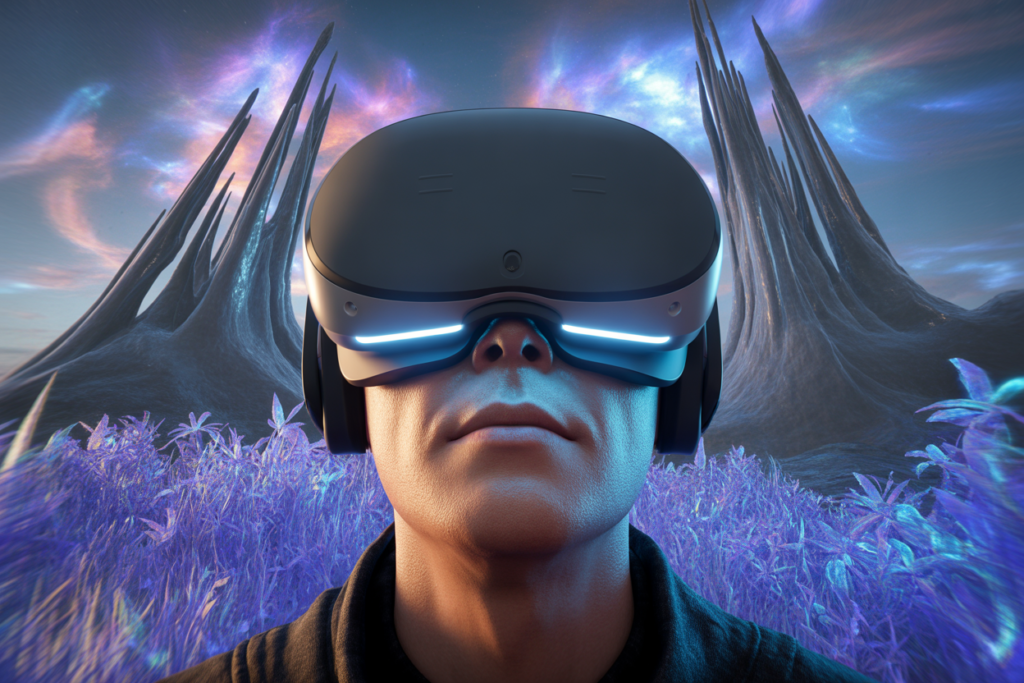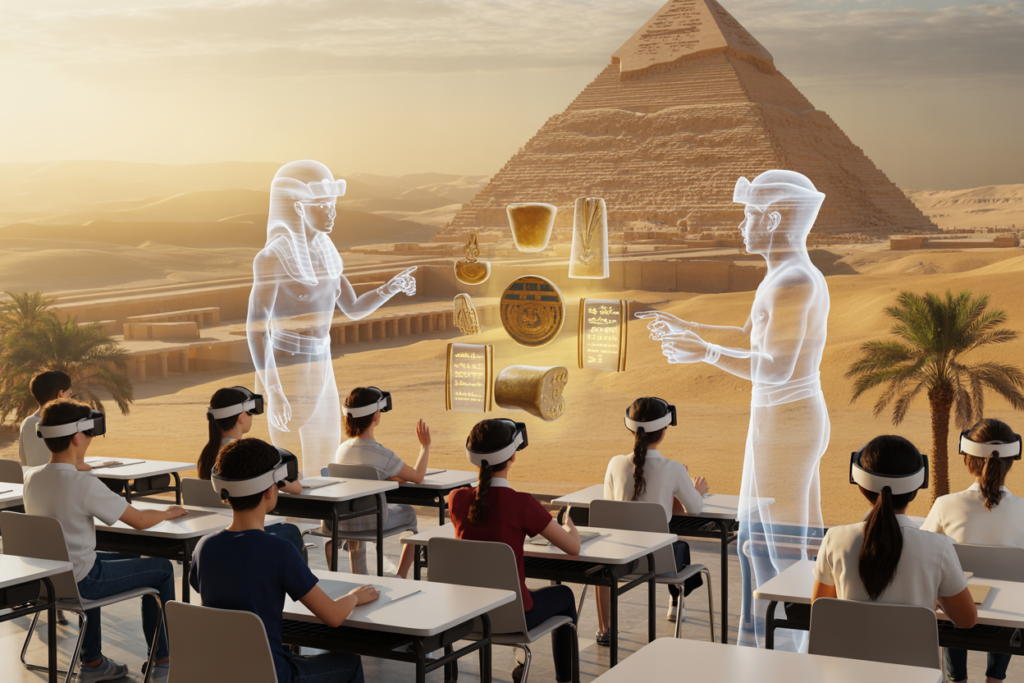Virtual Reality (VR) headsets have transformed from niche gaming peripherals to powerful tools driving innovation across industries. By immersing users in fully digital environments, VR headsets offer unparalleled experiences in gaming, education, healthcare, and beyond. Advancements in display technology, tracking systems, and connectivity have made VR more accessible and immersive, with the global VR market projected to reach $57 billion by 2028, according to Fortune Business Insights. As of October 2025, VR headsets are at the forefront of technological innovation, blending with artificial intelligence (AI), 5G, and augmented reality (AR) to redefine human interaction. This article explores the latest advancements in VR headsets, their applications, challenges, and the future they promise, while addressing societal and ethical implications.
The Fundamentals of Virtual Reality
What is Virtual Reality?
Virtual Reality creates a fully immersive digital environment that replaces the user’s physical surroundings. VR headsets typically consist of:
- Head-Mounted Displays (HMDs): High-resolution screens for each eye, creating a stereoscopic 3D effect.
- Tracking Systems: Sensors, cameras, or lasers track head and body movements for precise interaction.
- Controllers: Handheld devices or gloves enable users to manipulate virtual objects.
- Audio Systems: Spatial audio enhances immersion with 3D soundscapes.
Unlike augmented reality, which overlays digital content onto the real world, VR transports users to entirely virtual spaces, from fantastical game worlds to simulated operating rooms.
The Evolution of VR Headsets
VR’s origins date back to the 1990s with devices like the Sega VR, but early headsets were bulky and limited by low-resolution displays. The 2010s marked a turning point with Oculus Rift’s 2016 launch, followed by HTC Vive, PlayStation VR, and Meta Quest. By 2025, VR headsets have become lighter, wireless, and more powerful, driven by advancements in optics, processing, and connectivity.
Major Advancements in VR Headsets
1. High-Resolution Displays and Optics
Modern VR headsets feature micro-OLED and mini-LED displays with resolutions approaching 4K per eye, delivering crisp, lifelike visuals. In 2024, Meta’s Quest 3 Pro introduced a 4K micro-OLED display with a 120-degree field of view (FOV), reducing the “screen door” effect. Pancake lenses, used in devices like Apple’s Vision Pro, minimize bulk while maximizing clarity. Varifocal lenses, which adjust focus based on eye movement, are emerging, with Pimax’s 2025 prototype offering dynamic depth perception.
Applications:
- Gaming: High-resolution displays enhance immersion in titles like Half-Life: Alyx.
- Cinema: VR headsets stream 360-degree films, simulating theater experiences.
- Design: Architects visualize 3D models with unprecedented detail.

2. Wireless and Standalone VR
Early VR headsets required tethered connections to powerful PCs, limiting mobility. Standalone VR headsets, like the Meta Quest 3 and Pico 4, integrate processors, batteries, and storage into compact designs. In 2025, Qualcomm’s Snapdragon XR3 chip powers standalone headsets with 50% faster performance and 30% better power efficiency. 5G connectivity enables cloud-based VR, offloading processing to remote servers for complex applications.
Impact:
- Accessibility: Standalone headsets are affordable, starting at $300, broadening adoption.
- Mobility: Wireless designs allow users to move freely in large spaces.
- Cloud VR: 5G enables high-fidelity streaming, reducing hardware costs.
Case Study: In 2024, Oculus’s cloud VR platform streamed AAA games to Quest 3 users, reducing the need for expensive gaming PCs and boosting VR gaming adoption by 25%.
3. Advanced Tracking and Interaction
Tracking technology has evolved from external sensors to inside-out tracking, using built-in cameras for precise motion detection. In 2025, Valve’s Index 2 introduced eye-tracking and facial recognition, enabling avatars to mimic real-time expressions. Haptic gloves, like HaptX’s 2024 model, provide tactile feedback, simulating textures and resistance. Brain-computer interfaces (BCIs), though experimental, are emerging, with Neuralink’s 2025 demo allowing users to control VR environments with thoughts.
Applications:
- Social VR: Platforms like VRChat use facial tracking for lifelike interactions.
- Training: Haptic feedback enhances simulations for surgeons and pilots.
- Accessibility: BCIs enable VR control for users with mobility impairments.

4. AI Integration
AI enhances VR by enabling dynamic environments and intelligent interactions. In 2025, NVIDIA’s AI-driven VR rendering technology reduced latency by 40%, improving frame rates for smoother experiences. AI-powered NPCs (non-player characters) in games like Horizon Worlds adapt to user behavior, creating personalized narratives. Voice assistants, like an advanced Grok, enable natural language control of VR environments.
Impact:
- Personalization: AI tailors VR experiences based on user preferences.
- Realism: Dynamic environments respond to user actions in real-time.
- Efficiency: AI optimizes rendering, reducing power consumption.
5. Mixed Reality Capabilities
Modern VR headsets increasingly support mixed reality (MR), blending VR and AR. Devices like Apple’s Vision Pro and Meta’s Quest 3 use passthrough cameras to display the real world with digital overlays. In 2024, Microsoft’s HoloLens 3 integrated MR for enterprise applications, allowing users to switch between immersive VR and AR modes seamlessly.
Applications:
- Workplace Collaboration: MR enables virtual meetings with real-world integration.
- Training: Technicians use MR to overlay repair instructions onto physical equipment.
- Gaming: MR games blend virtual enemies with real environments.
6. Lightweight and Ergonomic Designs
Comfort is critical for prolonged VR use. In 2025, HTC’s Vive Focus 4 weighed just 300 grams, with adjustable straps and breathable materials. Cooling systems, like Sony’s PSVR 3, prevent overheating during extended sessions. Advances in miniaturization, such as compact batteries and chipsets, make VR headsets less intrusive.
Impact:
- User Adoption: Comfortable designs encourage longer usage.
- Accessibility: Lightweight headsets suit diverse age groups and physical abilities.
- Aesthetics: Sleek designs appeal to mainstream consumers.
Applications of VR Headsets
1. Gaming and Entertainment
VR gaming remains the primary driver of headset adoption. Titles like Beat Saber and Resident Evil 4 VR showcase immersive gameplay. In 2025, Sony’s PSVR 3 supported 8K visuals, enhancing cinematic VR experiences. VR concerts, like those hosted by Meta’s Horizon Venues, allow fans to attend live events virtually, with 360-degree views and interactive features.
2. Healthcare
VR headsets are transforming healthcare through therapy, training, and rehabilitation. In 2024, Oxford University used VR to treat phobias, reducing anxiety symptoms by 68% in patients. Surgeons practice complex procedures in VR simulations, improving success rates. VR also aids physical therapy, with stroke patients using VR games to regain motor skills.
3. Education and Training
VR enhances learning by simulating real-world scenarios. In 2025, Stanford’s VR classroom platform allowed students to explore historical events, like the Roman Colosseum, in immersive detail. Corporate training programs use VR for skills like public speaking and hazardous environment response, cutting costs by 20%.

4. Workplace Collaboration
VR headsets enable virtual workspaces, with platforms like Spatial and Meta’s Horizon Workrooms hosting 3D meetings. In 2024, Accenture used VR for global team collaboration, reducing travel costs by 15%. MR capabilities allow employees to interact with physical and virtual objects simultaneously.
5. Fitness and Wellness
VR fitness apps, like Supernatural and FitXR, combine exercise with immersive environments. In 2025, Peloton launched a VR cycling platform, integrating live classes with virtual landscapes. VR meditation apps, such as Tripp, promote mental health through guided experiences in calming virtual worlds.
Challenges in VR Headset Development
1. Technical Limitations
- Motion Sickness: Latency and low refresh rates cause discomfort, though 120Hz displays have mitigated this.
- Battery Life: Standalone headsets last 2-3 hours, limiting extended use.
- Cost: High-end models like Vision Pro ($3,500) remain expensive.
2. Health and Social Concerns
Prolonged VR use can cause eye strain, headaches, or disorientation. Social isolation is a concern, as immersive environments may reduce real-world interactions. In 2024, studies linked excessive VR use to reduced attention spans in adolescents, prompting calls for usage guidelines.
3. Privacy and Security
VR headsets collect sensitive data, including eye-tracking and biometric information. A 2025 data breach in a VR social platform exposed user movements, raising privacy concerns. Robust encryption and transparent data policies are essential.
4. Content Ecosystem
Limited high-quality VR content hinders adoption. Developers face high costs for creating immersive experiences, and fragmentation across platforms complicates app development. Open standards, like OpenXR, are addressing this challenge.
The Future of VR Headsets
1. Mainstream Adoption
By 2030, VR headsets are expected to become as ubiquitous as smartphones, according to Gartner. Affordable models under $200 will drive mass adoption. Integration with AI assistants and 6G connectivity will enhance functionality, making VR a primary computing platform.
2. Advanced Sensory Integration
Future VR headsets will incorporate full-body haptics, olfactory feedback, and advanced BCIs. In 2025, a Stanford lab demonstrated a VR glove with scent emitters, simulating smells in virtual environments. These advancements will create hyper-realistic experiences.
3. Convergence with AR and MR
VR and AR will merge into extended reality (XR) platforms, with headsets supporting seamless transitions between immersive and augmented modes. By 2035, XR devices could replace laptops and TVs, offering all-in-one solutions for work and entertainment.
Prediction: By 2030, the VR market is projected to exceed $100 billion, with healthcare and education as key growth sectors, according to IDC.
Societal Implications
VR headsets have the potential to:
- Enhance Accessibility: Provide immersive experiences for people with disabilities, such as virtual travel for mobility-impaired individuals.
- Drive Economic Growth: Create jobs in VR content creation, hardware design, and software development.
- Transform Education: Democratize learning through virtual simulations, bridging educational gaps.
However, equitable access and responsible use are critical to avoid exacerbating digital divides or social isolation. Ethical design and regulation will ensure VR’s benefits are maximized.
Conclusion
Virtual Reality headsets are redefining human experiences, from immersive gaming to transformative healthcare and education applications. Advancements in displays, tracking, and AI integration have made VR more accessible and engaging, while mixed reality capabilities bridge virtual and physical worlds. Despite challenges like cost, health concerns, and privacy, the future of VR is promising, with potential to become a cornerstone of daily life. As technology evolves, collaboration between innovators, regulators, and society will ensure VR headsets unlock their full potential responsibly.


